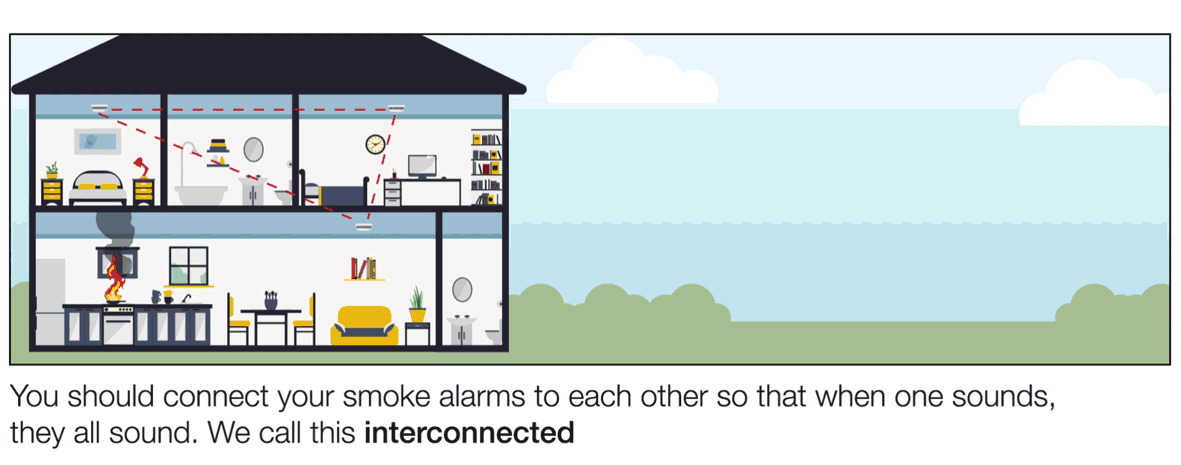CFA recommends that smoke alarms should be interconnected, so that when any alarm activates, all smoke alarms sound.

It is now law in Victoria that in any new home, or home undergoing significant renovation, that where multiple smoke alarms are required, they must be interconnected.
Most fires that result in death start in the lounge room or the bedroom. The minimum smoke alarm requirement, by law, is that you have smoke alarms located between each area containing bedrooms and the remainder of the home. This means that for most homes a smoke alarm will be placed in the hallway outside groups of bedrooms.
Research has shown that when a fire starts in a bedroom with the door closed, the smoke alarms in the hallway do not activate. Even with the bedroom door open, the hallway smoke alarm may not activate in time to allow people in the bedrooms to get out. It makes sense, therefore, that smoke alarms should be installed inside bedrooms. This is why CFA now recommends smoke alarms inside all bedrooms as well as in the hallway.
Research also tells us that almost all children do not wake to the sound of a smoke alarm. This makes it important that adults in the home can hear the smoke alarms. In modern homes where the parents’ bedroom is often in another part of the house they may not hear the smoke alarm in the children’s bedrooms.
It is the nature of modern home design and the increased use of plastics and synthetic materials, that when a fire starts you may only have less than three minutes for everyone to wake up and get out of the house.
Interconnection means that the smoke alarms communicate with each other so that if one smoke alarm activates all the smoke alarms in the home go off, making it more likely that all persons have the best chance of getting out before they are overcome by smoke and die.
Hardwired interconnection
There are many 240 volt smoke alarms that can be interconnected by using an additional wire which is laid alongside the 240v wiring at the time of installation. This wire connects all the smoke alarms together so that if one activates they all do. It is usually possible to connect up to 12 smoke alarms using this method. These smoke alarms cost between about $30 to $50 per unit plus the cost of an electrician to install them.
Wireless (RF) interconnection
Becoming more popular, and much easier to install, are wireless interconnected smoke alarms. These smoke alarms use wireless radio frequency (RF) transmissions to interconnect up to 40 smoke alarms depending on the model. At the time of installation these smoke alarms wirelessly connect to each other, much the same way as you would ‘pair’ Bluetooth devices. They have a much greater range though, and should work throughout most homes.
Interconnectable, battery-operated smoke alarms powered by a 10-year long-life battery are available from about $80 per unit and don't require an electrician to install. More expensive units are available that can connect to a mobile phone app to let you know when and where they’ve activated and you can even remotely silence the smoke alarm if you burn the toast.
Page last updated: Friday, 11 April 2025 3:32:35 PM